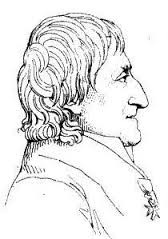
Tommaso Valperga di Caluso
Most of these volumes were once part of the collection of the dukes of Savoy, but some entered the library when it became the Royal (Regia) library in 1720, above all, but not only, with the important bequest by Tommaso Valperga di Caluso (1809 and 1815).
The information we have on the origin of these collections is only approximate and partial and the sources that can be used to study the history of the formation of the various collections (from private ownership by Jewish families), their life within the Savoy collections (the catalogues), and their use (their study by academics above all) are still mostly unedited if not unknown.
For this reason, Stelio Bassi, director of the Library from 1957 to 1977, reminds us that “the lack of the accounts of the Hôtel, that is, the private accounts of the duke’s household, for this period from the State Archive of Turin, like the lack of a particular archive of the duke’s library, make it practically impossible to follow the formation of the duke’s Library in any detail …” (I fondi orientali della Biblioteca Nazionale Universitaria di Torino, prefazione a S. Noja, Catalogo dei manoscritti orientali della Biblioteca Nazionale di Torino. I: I manoscritti arabi, persiani e turchi, Torino, Istituto Poligrafico dello Stato, 1974, p. XI, n.3). This lack of information, which is in many ways insurmountable, can be filled at least in part by identifying and studying sources which are found elsewhere: within archival collections that are not directly linked to the activity of the Library and, above all, in the books themselves (ex libris, stamps, marginal notes or notes between the folios and notes of censorship).

Vincenzo Conti
The aim of the project, therefore, is to collect and publish the unknown sources and the (few) known sources that pertain to the history of the Hebrew printed books and manuscripts held in the Biblioteca Nazionale. This information has been collected and inventoried, making it possible to create cross references and allow the reconstruction of a historical narrative of great interest.
The libraries which house the materials used in the research are in the first place and above all the Biblioteca Nazionale Universitaria itself, the University Archive, the Archive of the Accademia delle Scienze, and the Archivio di Stato (State Archive).
The sources can be placed in the following categories depending on their type:
- archive documents;
- ex libris book plates (found almost exclusively on the printed materials: the manuscripts were all seriously damaged in the 1904 fire and, with one exception, no longer preserve their bindings or end papers);
- notes showing book borrowing or notes made by the owners (found almost exclusively on the printed materials: the manuscripts were all seriously damaged in the 1904 fire and, with one exception, no longer preserve their bindings or end papers);
- notes of censorship (found almost exclusively on the printed materials: the manuscripts were all seriously damaged in the 1904 fire and, with one exception, no longer preserve their bindings or end papers);
- catalogues or lists;
- stamps or labels (excluding the ex libris of the Biblioteca Ducale and those of Tommaso Valperga di Caluso found systematically on the books; it is possible to consult two specific lists of the printed books that bear these labels).











